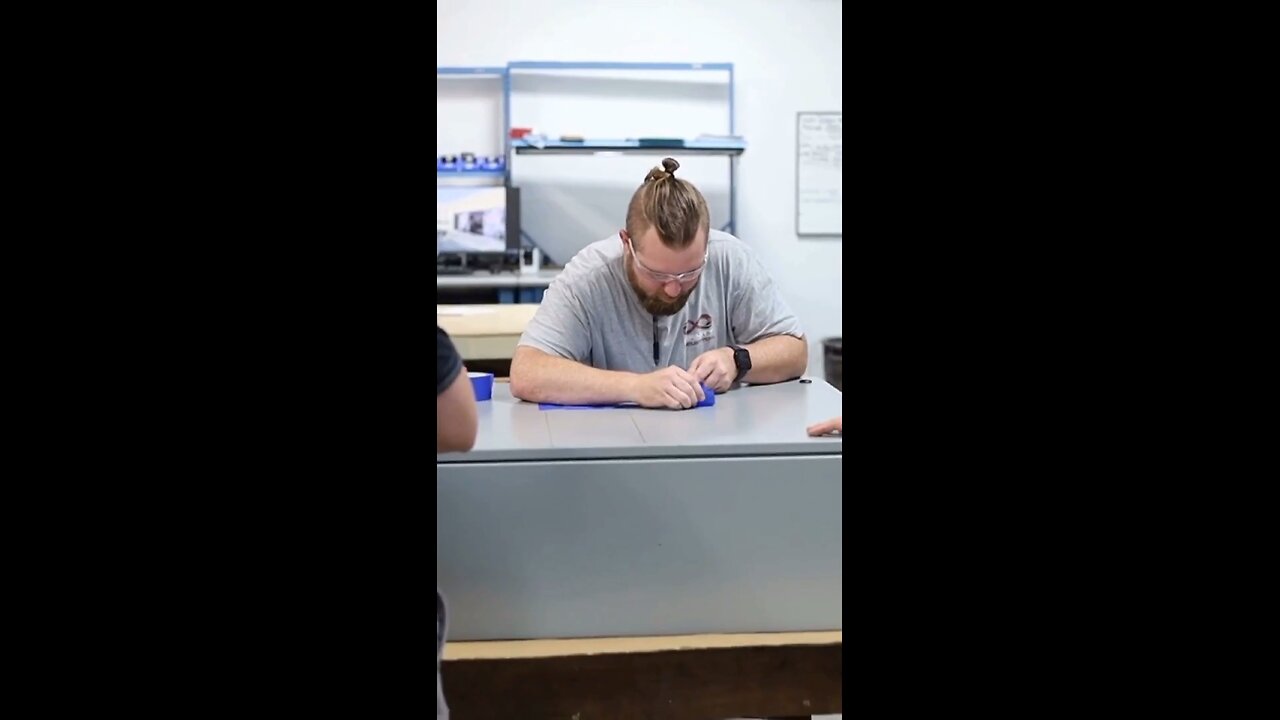Premium Only Content

Installing an HMI screen
Here’s Myles showing some of our new panel techs the process of properly installing an HMI screen on a cabinet.
Steps to Cut a Hole for an HMI Screen
1. Read the Specifications: Before starting, carefully read the HMI screen installation guide to understand the exact dimensions and any specific requirements for the cutout.
2. Measure and Mark: Using a measuring tape or ruler, determine where the HMI screen will be placed on the control panel cabinet. Mark the center point, and then draw the precise dimensions of the required cutout using a marker or pencil. Ensure the lines are clear and straight.
3. Tape the Line: Apply painter's tape or masking tape along the marked line. This will help prevent the surface from chipping or scratching during cutting and will allow for a cleaner edge.
4. Drill Starter Holes: At each corner of the marked cutout, drill a hole large enough for the blade of your jigsaw to fit through. These starter holes will make it easier to begin cutting without damaging the surrounding area.
5. Cut the Hole: Insert the jigsaw blade into one of the starter holes and carefully follow the taped lines. Keep the tool steady and the cut straight to ensure a clean finish. If you are using a panel saw, align it with the marks and proceed with caution.
6. Smooth the Edges: Once the cutout is complete, use a file or deburring tool to smooth any sharp edges or irregularities. This step is essential to prevent injury and to ensure the HMI screen fits perfectly.
7. Test Fit the HMI Screen: Gently place the HMI screen into the cutout to check the fit. If there are any tight spots or gaps, adjust by filing the edges until the fit is just right.
8. Secure the HMI Screen: Follow the manufacturer's instructions to secure the HMI screen into the cutout. This may involve screws, clamps, or adhesive depending on the design.
9. Final Inspection: Double-check all work for cleanliness
and ensure the HMI screen is securely installed and operational.
-
 2:12:18
2:12:18
TheDozenPodcast
22 hours agoIslam vs Christianity: Bob of Speakers' Corner
66.2K15 -
 14:36
14:36
The StoneZONE with Roger Stone
1 day agoRoger Stone Delivers Riveting Speech at Turning Point’s AMFEST 2024 | FULL SPEECH
94.4K23 -
 18:59
18:59
Fit'n Fire
12 hours ago $5.89 earnedZenith ZF5 The Best MP5 Clone available
50.8K1 -
 58:34
58:34
Rethinking the Dollar
21 hours agoTrump Faces 'Big Mess' Ahead | RTD News Update
40.8K5 -
 5:35
5:35
Dermatologist Dr. Dustin Portela
21 hours ago $1.95 earnedUnboxing Neutrogena PR Box: Skincare Products and Surprises!
40.5K4 -
 11:20
11:20
China Uncensored
21 hours agoCan the US Exploit a Rift Between China and Russia?
64.2K21 -
 2:08:48
2:08:48
TheSaltyCracker
16 hours agoLefty Grifters Go MAGA ReeEEeE Stream 12-22-24
262K701 -
 1:15:40
1:15:40
Man in America
19 hours agoThe DISTURBING Truth: How Seed Oils, the Vatican, and Procter & Gamble Are Connected w/ Dan Lyons
154K137 -
 6:46:07
6:46:07
Rance's Gaming Corner
20 hours agoTime for some RUMBLE FPS!! Get in here.. w/Fragniac
177K5 -
 1:30:48
1:30:48
Josh Pate's College Football Show
20 hours ago $11.42 earnedCFP Reaction Special | Early Quarterfinal Thoughts | Transfer Portal Intel | Fixing The Playoff
108K1